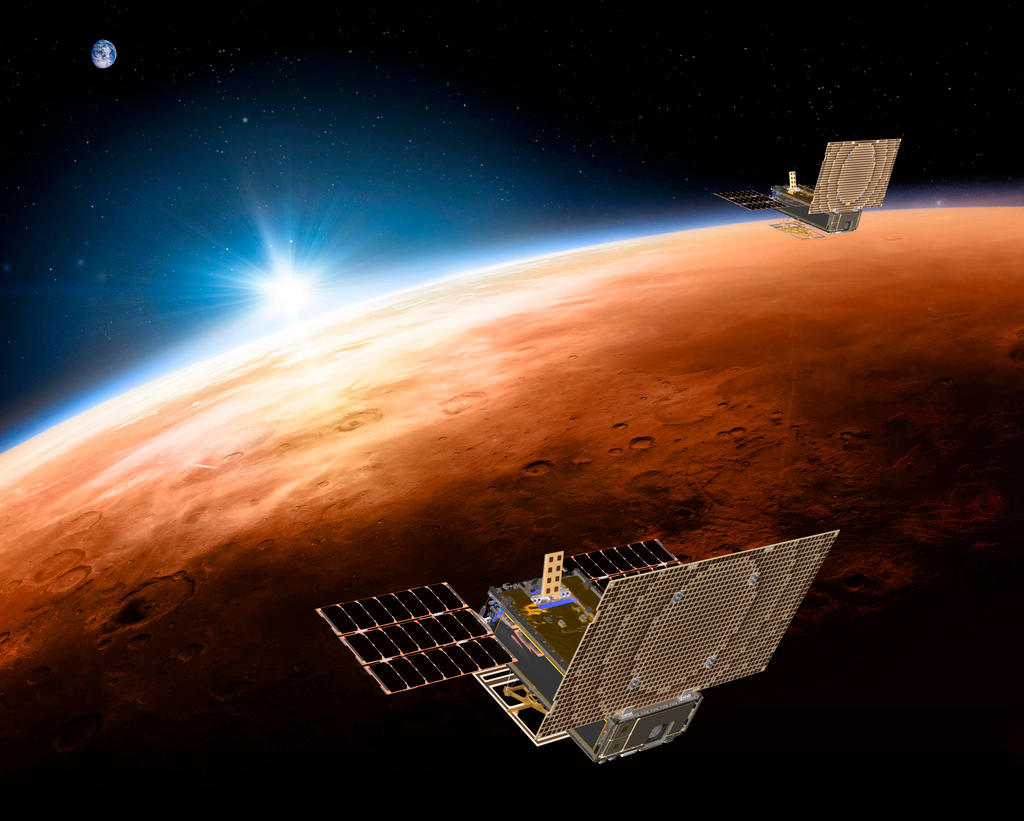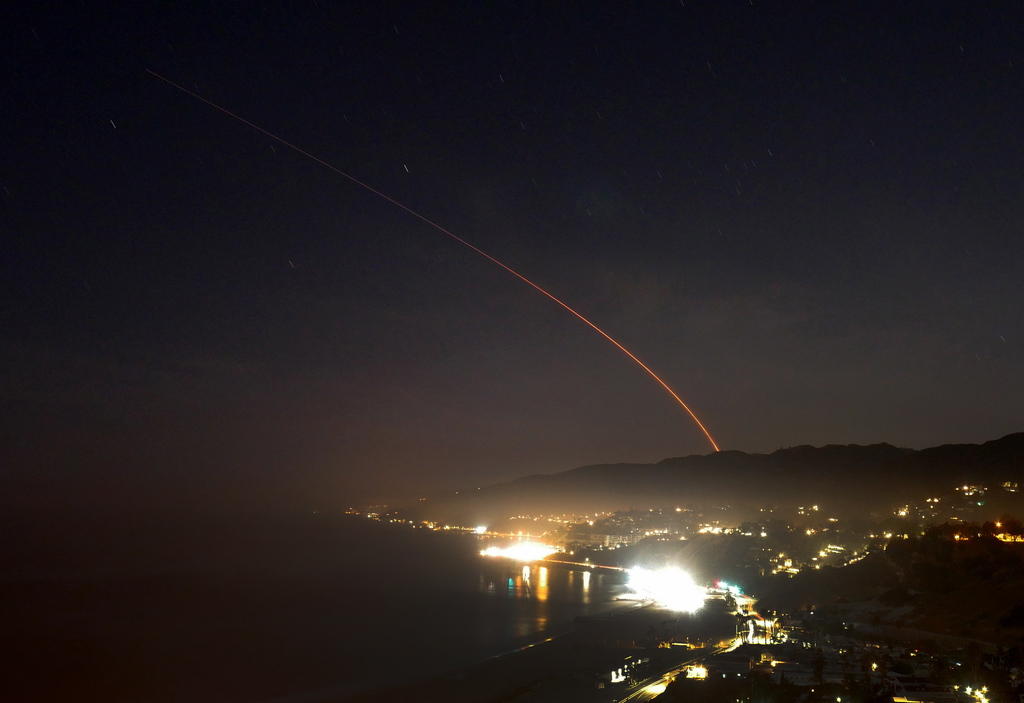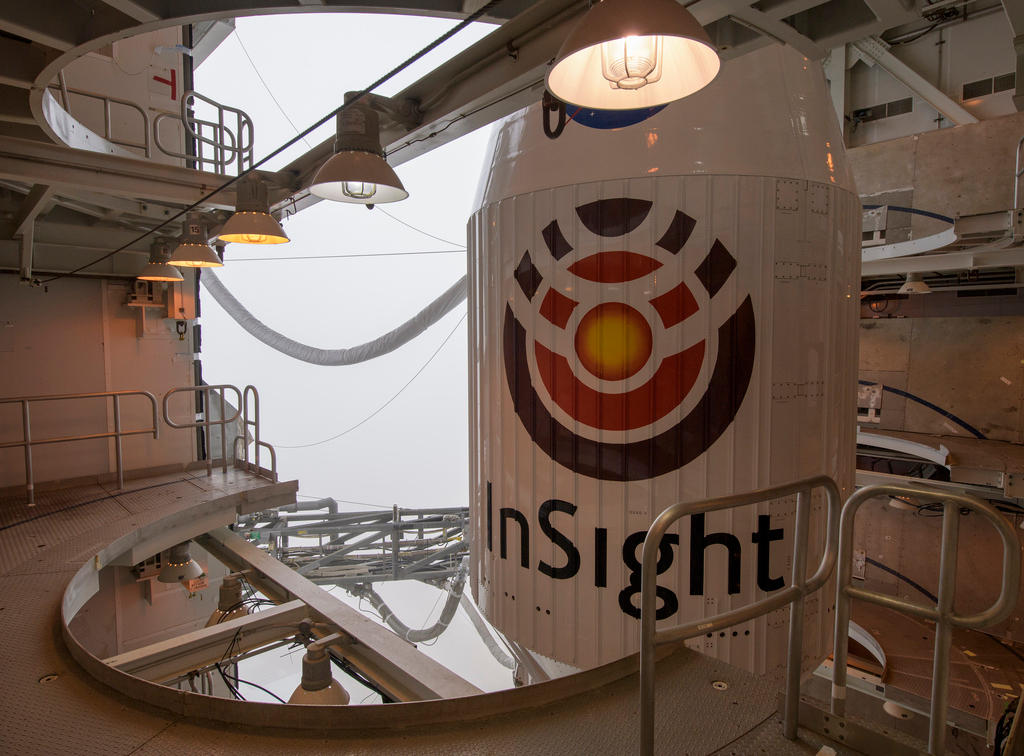NASA’s mission to Mars launches with Swiss technology onboard

Perrine Elise Huber of swissnex San Francisco explains the importance of the Insight mission to Mars that launched on Saturday, and Switzerland's role.
You can feel the excitement in Domenico Giardini, Professor of Seismology and Geodynamics at ETH Zurich’s Institute for Geophysics, who is a Co-Investigator on the mission.
“When I came to Switzerland as a Professor 21 years ago, I told the President of ETH Zurich that I want to go to Mars. It’s been a lifetime commitment of mine to get there,” says Giardini.
NASA latest mission to Mars, known as Insight, launched on Saturday from California. While previous missions to the Red Planet investigated its surface and atmosphere, Insight is the first mission to study the deep interior of Mars with the aim to help scientists understand how all Earth-like planets formed. Alongside an international team, scientists from ETH Zurich have developed a key instrument that will be used to study the interior of Mars, a seismometer.
Taking the six-month voyage into deep space onboard Insight, the seismometer will detect seismic waves – vibrations generated by ‘Marsquakes’ that travel through Mars’ interior. Giardini has been developing this seismometer since the late 90s, but it’s been a life-long mission of his to reach Mars.

Second time lucky
In 2012, Giardini and his team applied for funding from NASA’s Discovery Program that supports space missions that explore our solar system. Their project was among three missions shortlisted out of 29, and was later selected as the winning mission the following year. This gave Giardini and his team a short three years to prepare for the original launch date in 2016.
But the 2016 mission failed before it even left Earth due to instrument malfunction. And as the planets only align every 26 months to allow for us to reach Mars, the next window to launch wasn’t until now.
Examining Mars’ ‘vital signs’ for the first time
Launched with the support of an Atlas V rocket from the Vandenberg Air Force Space Launch Complex in California, Insight carries a suite of additional instruments that will study the planets ‘vital signs’.
Perrine Elise Huber, Head of Communication at swissnex San FranciscoExternal link.
swissnex San Francisco is part of the Swiss global networkExternal link that collaborates with a broad spectrum of partners related to international research and innovation (such as higher education and research institutions), and supports them in their outreach and active engagement in the global exchange of knowledge, ideas and talent. swissnex’s San Francisco’s mission is to connect Switzerland and the West Coast of America in education, research, and innovation.
The swissnex Network is an initiative of the State Secretariat for Education, Research and Innovation and is part of Switzerland’s network abroad managed by the foreign ministry. The activities of the swissnex Network are based on a collaborative approach, relying on public and private partnerships and funding.
Its temperature will be detected using a heat flow and physical properties probe that will penetrate five metres (16 feet) below the surface. Mars’ exact shape and position in space will also be studied using a radio to measure small variations in the wobble of Mars’ pole. This will allow scientists to understand more about the structure and composition of the core of the planet.
By exploring the interior of Mars, scientists will learn how other rocky planets form, and can compare it to Earth. Until now, scientists have only ever studied Earth’s interior, so by examining beneath Mars’ surface and comparing it to our own planet, they hope to better understand our solar system and to learn more about the conditions required to support life.
When the spacecraft reaches the outer layer of Mars, it will begin a six-minute descent to the Martian surface aiming for an area of 2,500 km2, which has less than 1% of rocks.
“It took about three years to isolate a number of areas to land on, and on the basis of geology, this area was chosen. There is a camera that helps the lander avoid any large shadows, like holes or rocks… If you land on a rock, the instruments won’t work,” says Giardini.
Insight lands on Mars in late November and will stay in this position for the two Earth year mission (one Mars year). As soon as they land, data will start being sent back to Earth, taking only 20 minutes to make its way back.
Mars is a time machine
A planet’s deep interior captures the history of its formation that determines what happens on the surface. It also influences a planet’s atmosphere, the structures on the surface, landscape elevation, and water and ice–all the conditions that determine the existence of life. Although Mars and Earth formed more than 4.5 billion years ago from the same material, they evolved very differently. By studying below the surface of Mars, we’ll be able to look back in time and answer questions about why Earth evolved to support life and not Mars.
“In some ways, InSight is like a scientific time machine that will bring back information about the earliest stages of Mars’ formation 4.5 billion years ago,” said Insight’s Principal Investigator Bruce Banerdt, at NASA’s Jet Propulsion Laboratory who has been working on this mission for 25 years. “It will help us learn how rocky bodies form, including Earth, its moon, and even planets in other solar systems.”
There have been 53 missions to Mars since the 1960s, from flybys to rovers, landers and orbiters, with just less than half of them successful. We’ll watch in anticipation as Insight makes its way through deep space to our neighboring Red Planet.

When asked what he expects to learn from this mission, Giardini says “Everything. Mars is a planet that is very similar to Earth, but it is also very different. It shows how the Earth could be, and we want to understand why the Earth went in one direction and Mars in another. Mars used to have oceans, a large atmosphere and a magnetic field like we do, but none of these exist anymore. It appears that there are only very small details that can really move things in different directions, and we like to understand what those small details are.”
Science has no borders
The scientists and engineers behind this mission come from five countries: Britain, France, Germany, Switzerland and the United States – reminding us that science, knowledge and the quest to explore deep space to find answers about life, our solar system and the universe, has no borders.
“It’s an extremely international mission. The actual spacecraft is built almost completely by NASA, but the payload, with the science, is from all over the world: Science has no borders, knowledge has no borders, and I think this is a very good example of that,” said Banerdt.

In compliance with the JTI standards
More: SWI swissinfo.ch certified by the Journalism Trust Initiative











You can find an overview of ongoing debates with our journalists here . Please join us!
If you want to start a conversation about a topic raised in this article or want to report factual errors, email us at english@swissinfo.ch.